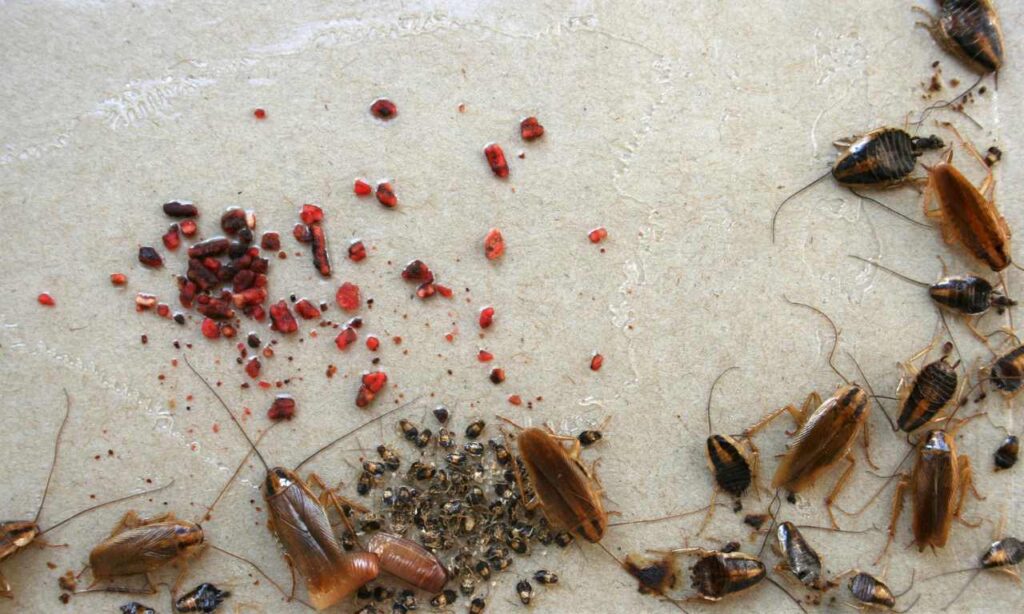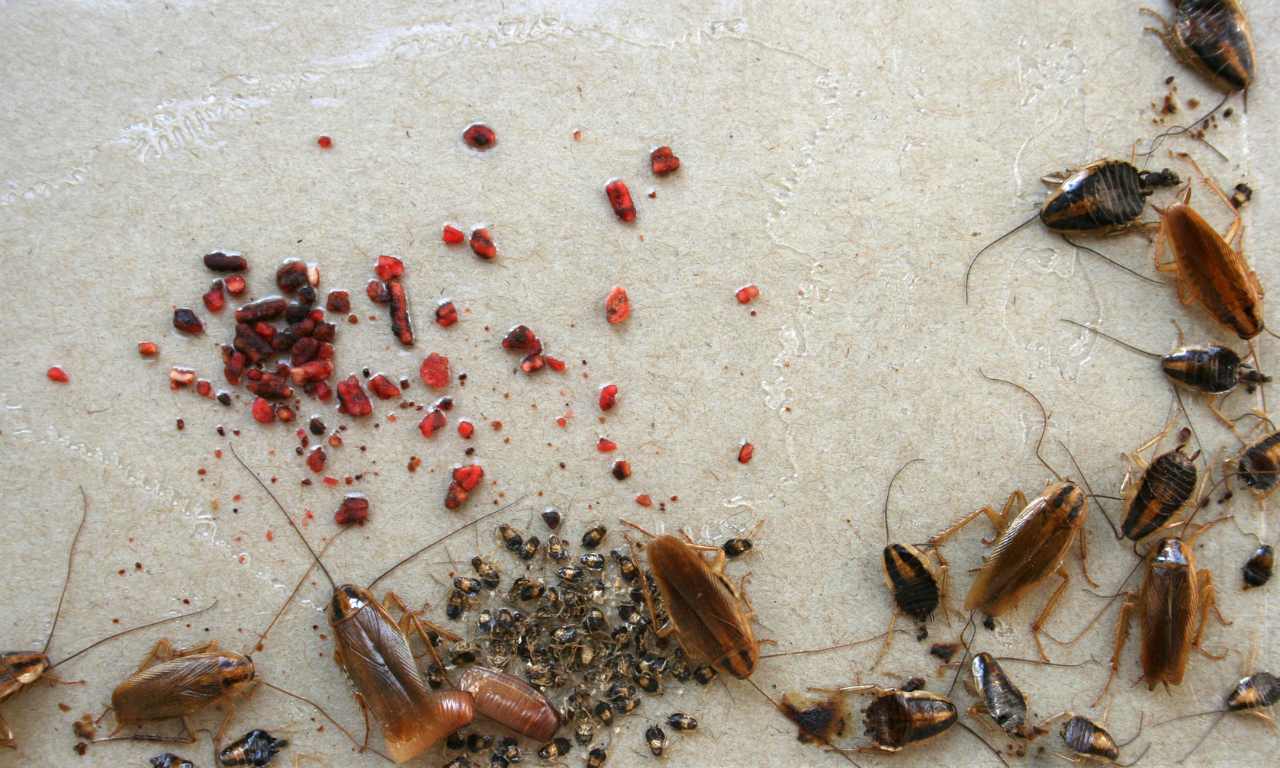
 Cockroaches lay eggs in various structures called oothecae, which can contain several eggs depending on the species. Some species deposit their eggs in concealed locations, while others carry the oothecae around until the eggs are ready to hatch.
Cockroaches lay eggs in various structures called oothecae, which can contain several eggs depending on the species. Some species deposit their eggs in concealed locations, while others carry the oothecae around until the eggs are ready to hatch.
Cockroaches can lay eggs throughout the year, but the timing may vary depending on the species and environmental conditions. The female cockroach typically lays eggs in a protective structure called an ootheca, which is deposited in a sheltered location such as crevices, behind wall fixtures, or in other protected areas.
The time it takes for cockroach eggs to hatch can range from several weeks to several months, depending on the species and environmental conditions.
How Cockroach Lay Eggs?
The process of laying eggs begins with the female cockroach mating with a male. After mating, the female produces an ootheca, which is a hard-shelled structure that protects the developing eggs. Depending on the species, the ootheca can contain anywhere from several to several dozen eggs.
Once the ootheca is produced, the female will deposit it in a protected location. Some species, such as the German cockroach, prefer to lay their eggs in warm, moist areas, such as behind appliances or in the corners of cabinets. Other species, such as the Oriental cockroach, lay their eggs in more concealed locations, such as in soil or under leaves.
After the ootheca is deposited, the eggs inside will develop over a period of several weeks to several months, depending on the species and environmental conditions. During this time, the ootheca will protect the eggs and provide them with the necessary moisture and warmth to develop.
Once the eggs are ready to hatch, they will split open and the baby cockroaches, or nymphs, will emerge. The nymphs are small, immature versions of adult cockroaches, and they will undergo a series of molts as they grow and develop. During this time, they will feed on food sources such as wood, plant material, and other cockroach feces.
As the nymphs mature, they will eventually reach adulthood and begin to reproduce, starting the cycle of egg-laying and development all over again.
In general, cockroaches are considered pests because they can carry disease and cause significant damage to food and other household items. If you suspect that you have a cockroach infestation, it is important to take steps to control the population and prevent further damage. This can include using insecticides, removing food sources, and sealing cracks and crevices in your home to prevent cockroaches from entering.
Overall, the process of cockroaches laying eggs is an important aspect of their biology and plays a significant role in their ability to thrive and reproduce. By understanding the process and taking steps to control populations, you can help to protect your home and prevent the spread of disease.
At What Season Does Cockroach Lays Eggs?
Cockroaches are able to lay eggs throughout the year, but the timing and frequency of egg-laying can vary based on several factors, including the species, environmental conditions, and availability of food and water.
For example, species such as the German cockroach, which is a common household pest, tend to lay eggs year-round in warm, moist environments, such as kitchen and bathroom areas. These cockroaches can lay several oothecae per year, each containing dozens of eggs, which can lead to rapid population growth if left unchecked.
On the other hand, some species, such as the Oriental cockroach, are more likely to lay eggs in the spring and summer when the weather is warmer and there is an abundance of food and water available. These cockroaches may produce fewer oothecae than the German cockroach, but the oothecae can contain a larger number of eggs, which can also contribute to population growth.
In addition to the species and time of year, the availability of food and water can also play a role in when and how frequently cockroaches lay eggs. Cockroaches that have access to plenty of food and water are more likely to lay eggs more frequently and produce more eggs per ootheca. On the other hand, cockroaches that are facing food and water shortages may delay laying eggs or produce fewer eggs per ootheca.
Another factor that can influence the timing of egg-laying is the availability of hiding places and shelter. Cockroaches that have access to protected, concealed locations are more likely to lay eggs and produce more eggs per ootheca. On the other hand, cockroaches that are living in more exposed or unsheltered areas may delay laying eggs or produce fewer eggs per ootheca.
Overall, the timing and frequency of cockroach egg-laying can vary based on a combination of species, environmental conditions, and access to food, water, and shelter. In order to control cockroach populations, it is important to understand the specific requirements and habits of the species present and take steps to reduce food and water sources, eliminate hiding places, and use appropriate pest control measures.
When Cockroaches Die Do They Lay Eggs?
No, cockroaches do not lay eggs after they die. The process of laying eggs is a specific biological function that is performed by female cockroaches while they are alive.
When a female cockroach is ready to lay eggs, she produces an ootheca, which is a hard-shelled structure that protects the developing eggs. Depending on the species, the ootheca can contain anywhere from several to several dozen eggs. Once the ootheca is produced, the female will deposit it in a protected location, where the eggs will develop over a period of several weeks to several months, depending on the species and environmental conditions.
It is important to note that not all female cockroaches will lay eggs. In some species, such as the German cockroach, only a small percentage of females will produce oothecae. In other species, such as the Oriental cockroach, most females will lay eggs, but the number of oothecae produced can vary based on the availability of food and water and other environmental conditions.
When a female cockroach dies, she is no longer capable of producing oothecae or laying eggs. The death of a female cockroach will not result in the laying of eggs, and it will not contribute to the population growth of the species.
What Happens If You Kill A Pregnant Cockroach?
When a pregnant cockroach is killed, it will not be able to lay its eggs, and the developing eggs inside the ootheca will not hatch. The death of a pregnant cockroach will not result in the hatching of eggs, and it will not contribute to the population growth of the species.
Cockroaches are prolific breeders and can lay several oothecae in their lifetime, each containing several to several dozen eggs. The death of a single pregnant cockroach will not have a significant impact on the overall population of the species. However, taking steps to control cockroach populations through the use of insecticides, reducing food and water sources, and eliminating hiding places can help to reduce the overall number of cockroaches in your home or environment.
It is important to note that while the death of a single pregnant cockroach may not have a significant impact on the overall population, it is still important to take steps to prevent cockroach infestations, as cockroaches can carry and spread disease, contaminate food, and cause damage to property.
In addition to the potential health and property damage associated with cockroach infestations, it is also important to consider the potential for cockroach allergens, which can cause allergic reactions in some individuals, especially those with asthma or other respiratory conditions.
Life Cycle Of A Cockroach?

The lifecycle of a cockroach typically consists of three stages: egg, nymph, and adult. The specific details of the cockroach lifecycle can vary depending on the species, but the general stages and development are similar for most cockroach species.
- Egg Stage: Female cockroaches lay eggs in a protective structure called an ootheca. The ootheca can contain anywhere from several to several dozen eggs, depending on the species. The eggs are usually deposited in a protected location, such as in crevices or in sheltered areas, and can take anywhere from several weeks to several months to hatch, depending on environmental conditions and the species.
- Nymph Stage: Once the eggs hatch, the cockroach nymphs emerge. Nymphs are miniature versions of adult cockroaches, but they lack wings and are smaller in size. During the nymph stage, the cockroaches will undergo several molts, or shedding of their exoskeleton, as they grow and develop. The number of molts and the length of the nymph stage can vary depending on the species, but typically lasts several months to a year.
- Adult Stage: Once the nymphs have completed their development, they emerge as adult cockroaches. Adult cockroaches are typically winged and are capable of reproducing. Female cockroaches can lay several oothecae during their lifetime, and the number of eggs produced can vary depending on the species and environmental conditions.
The lifespan of a cockroach can vary depending on the species and environmental conditions, but most species have a lifespan of several months to a year.
Welcome to my blog. I have been doing pest control for years since my house, garden and pets were always attacked by various kinds of pests and as a result I had to know proper pest control techniques that works. In this blog I share all the tips and tricks that I know and I hope you’ll find it helpful.
